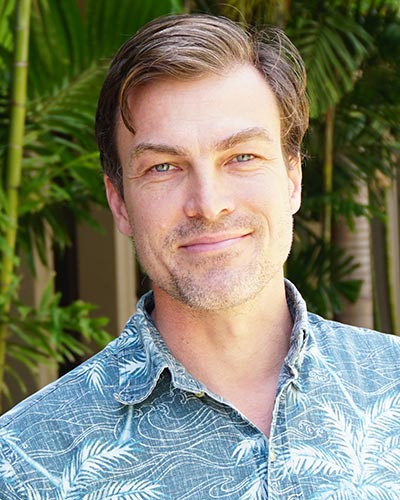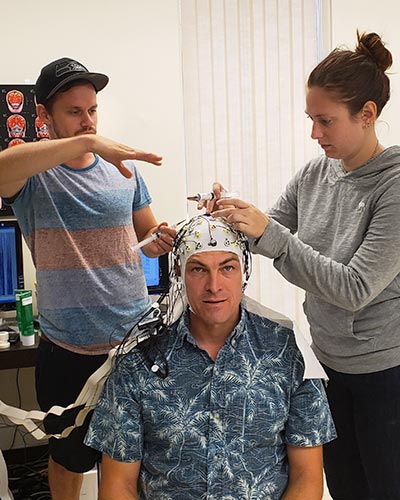We use our brains to think every day. Conversely, Jonas Vibell thinks everyday about brains. In 2017, the assistant professor in the University of Hawaiʻi at Mānoa’s Department of Psychology launched the Brain and Behavior Lab. Among its many research goals: to learn more about the link between the brain and behavior, and to spur innovation in the treatment of brain diseases and disorders.
It was a smart move. Today the lab conducts cutting-edge research that illuminates, educates and generates STEM jobs; establishes collaborations with entities and individuals investing heavily in cognitive neuroscience; and attracts significant funding from the National Institutes of Health, research institutes and private foundations.
“Everything we think and do is controlled by the three-pound chunk of brain inside our heads. It is one of the last true unknown frontiers,” said Vibell. “We are in a unique time in history – we have better brain-imaging tools than ever before. Not only can we use them to treat brain disorders, but this new knowledge can lead to innovation in fields such as artificial intelligence and data science. It has already shown tremendous potential.”
Vibell was born and raised in Sweden, but lived in Germany, England, Singapore and the U.S. continent before moving to Oʻahu about a decade ago. He is a member of the Cognition, Neuroscience and Social Program group in the College of Social Sciences’ Department of Psychology, which has a strong association with the UH John A. Burns School of Medicine. The lab also collaborates with a select group of universities, hospitals and industry partners around the world, including the University of Hong Kong and England’s Oxford University, where Vibell earned his PhD.
“The lab was created to provide students with new learning experiences and research opportunities,” he said. “Hawaiʻi had previously done relatively little work in this domain, and many local students with interests in this area moved away for their studies. Now many people, including graduate students, have discovered our work and are getting in touch to learn more. Like me, they are interested in brain research and innovation in psychology, medical imaging, artificial intelligence and data science.”
Some exciting examples of current research include learning how sensory information merges in the cerebral cortex, and testing attention and perception through the use of visual, auditory and tactile stimulation. The Brain and Behavior Lab is one of the first university laboratories in the nation to utilize Optically Pumped Magnetometry, a new technology that measures the magnetic fields of the brain’s electronic impulses.
In addition, Vibell and his team have helped to attract several national and international conferences to Hawaiʻi, including the Brain Machine Interfaces conference in 2018. And experts in the field are often invited to give talks – like Temple University’s David V. Smith, who visited Sakamaki Hall in pre-pandemic March 2020 to discuss functional magnetic resonance imaging and its role in exploring cognitive decline among older adults.
It’s all pretty heady stuff, especially what may be on the horizon of discovery. “I have a passion for exploration and decided early on that the brain is a worthy challenge. The brain is an imploded universe in itself with 86 billion neurons guiding our thoughts and behavior,” said Vibell. “We have some ways to go to understand how it all operates, but some of the innovations springing from cognitive neuroscience will enable us to apply new insights into old ways of doing things. It would be great if we can attract more funding to hire talented graduate students to advance the field.”

